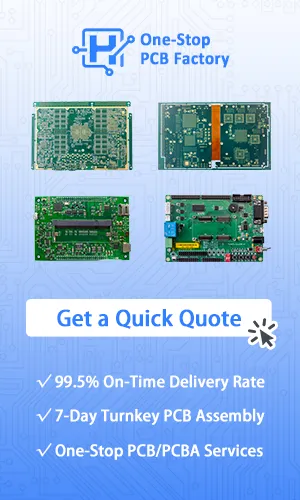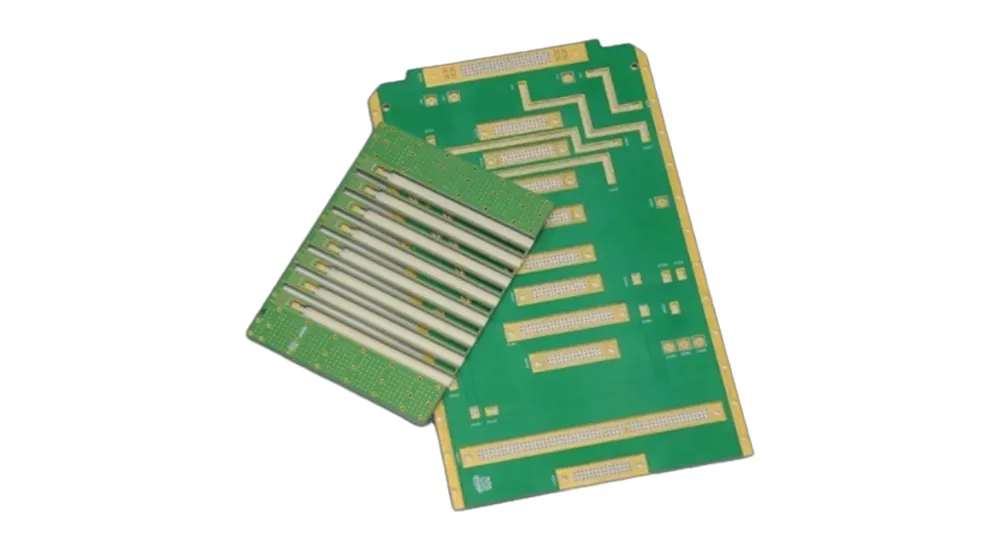
High Speed PCB
Introduction
High-speed PCB surface finishes are essential for maintaining signal integrity, reducing electromagnetic interference (EMI), and ensuring long-term reliability. As signal frequencies reach gigahertz levels and data rates span multiple gigabits per second, choosing the right surface finish becomes critical for signal quality and reliable soldering. The surface finish protects exposed copper traces while providing a solderable interface for components.
In high-speed PCB design, factors like dielectric loss, conductor roughness, and impedance consistency directly affect performance. This article examines three common surface finishes for high-speed PCBs: Electroless Nickel Immersion Gold (ENIG), Immersion Silver, and Organic Solderability Preservative (OSP).

What is PCB Surface Finish
PCB surface finish is the protective coating applied to exposed copper traces to prevent oxidation, improve solderability, and shield the board from environmental damage. In high-speed and high-frequency applications, choosing the right surface finish is crucial, as it directly affects signal transmission, including insertion loss, return loss, and impedance control.
Surface finishes influence several key performance factors in high-speed PCB designs. The conductor’s surface roughness can increase skin-effect losses at higher frequencies, while the electrical properties of the finish affect impedance consistency. Moreover, the planarity of the surface finish plays a vital role in the reliability of fine-pitch assemblies, such as ball grid arrays (BGA) and chip-scale packages (CSP), which are common in advanced electronics.
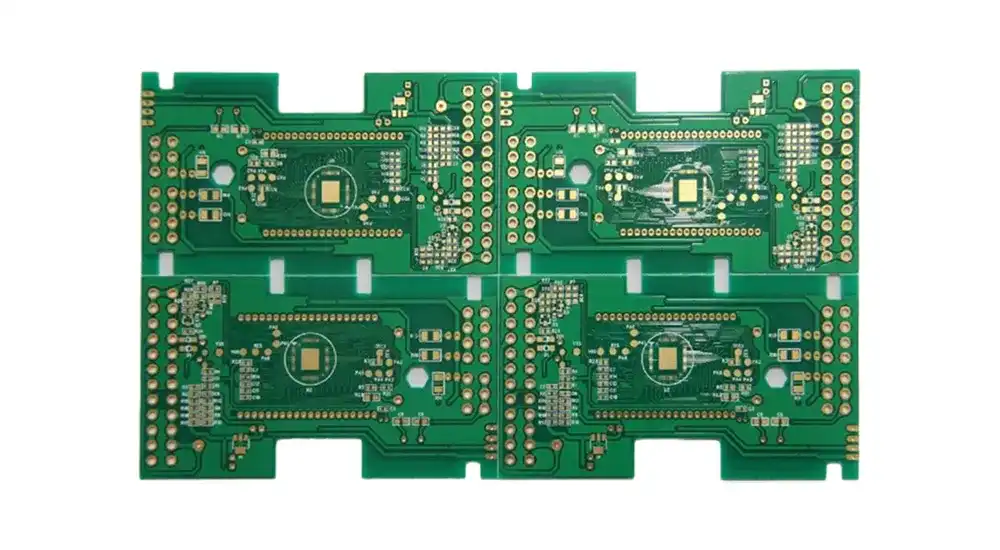
ENIG PCB
ENIG (Electroless Nickel Immersion Gold)
ENIG Composition: Nickel and Gold Layers Explained
ENIG is a dual-layer metallic coating consisting of 120–240 microinches of electroless nickel topped with 2–8 microinches of immersion gold. The nickel layer acts as a diffusion barrier to prevent copper migration and serves as the main solderable surface, while the thin gold layer protects the nickel from oxidation and ensures consistent electrical contact resistance.
ENIG Manufacturing Process: From Copper Activation to Immersion Gold
The ENIG process starts with copper surface activation using a palladium catalyst, followed by electroless nickel deposition through a controlled chemical reaction. The immersion gold step then replaces surface nickel atoms with gold ions via a self-limiting displacement reaction, producing a highly planar surface, typically within 25–50 microinches across component pads.
Advantages of ENIG for High-Speed PCB Applications
ENIG provides excellent compatibility with fine-pitch components, a long shelf life exceeding 12 months, and consistent impedance due to uniform thickness. It supports reliable wire bonding and maintains stable electrical performance across wide frequency ranges.
Key Considerations and Potential Challenges in ENIG Implementation
Careful process control is required to prevent black pad defects caused by excessive phosphorus in the nickel layer. The relatively high material cost and potential formation of brittle intermetallic compounds should also be considered in high-volume production.
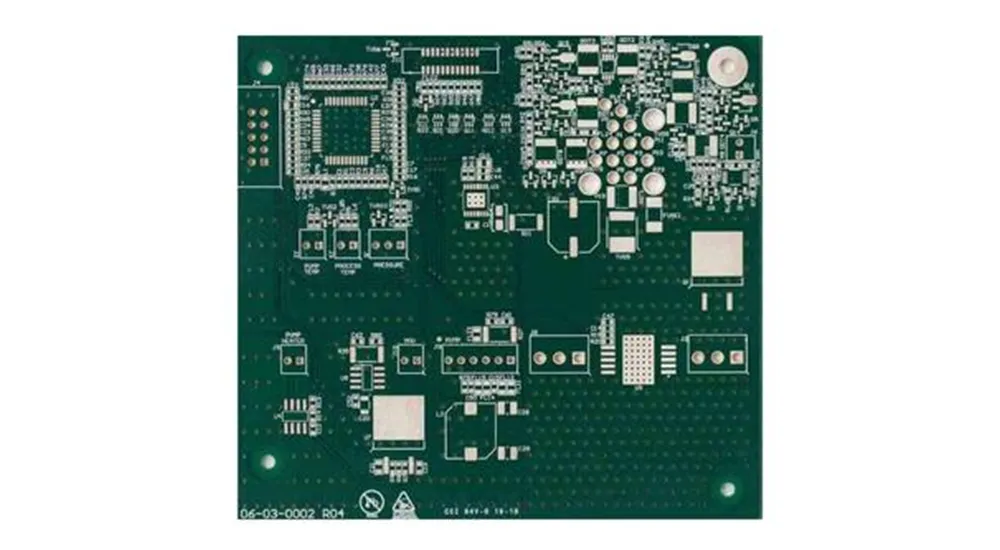
Immersion Silver PCB
Immersion Silver (IAg)
Immersion Silver Composition: Thin Silver Layer on Copper
Immersion silver (IAg) surface finish deposits a thin layer of pure silver, typically 6–18 microinches thick, directly onto copper conductors through chemical displacement. The process uses silver complexes to replace surface copper atoms, forming a metallurgically bonded interface with excellent electrical and thermal conductivity.
Immersion Silver Process: Chemical Displacement and Surface Control
The immersion silver process requires precise chemical control to achieve uniform thickness and avoid excessive copper dissolution. Post-processing treatments, such as anti-tarnish coatings and proper packaging, extend shelf life and maintain solderability, ensuring consistent performance for high-speed PCB applications.
Advantages of Immersion Silver for High-Speed PCB Applications
Silver’s high electrical conductivity minimizes conductor losses and enhances signal integrity compared to other surface finishes. Its thin profile ensures excellent planarity, essential for fine-pitch component assembly, while maintaining stable impedance for high-speed signals. Immersion silver is particularly suitable for designs requiring minimal insertion loss and reliable electrical performance across wide frequency ranges.
Considerations and Challenges in Using Immersion Silver
Silver is prone to tarnishing and sulfur contamination, which requires controlled storage and handling conditions. Its typical working shelf life is 3–6 months depending on environmental exposure. Multiple reflow cycles can also cause silver migration into solder joints, potentially affecting long-term reliability in demanding high-speed applications.
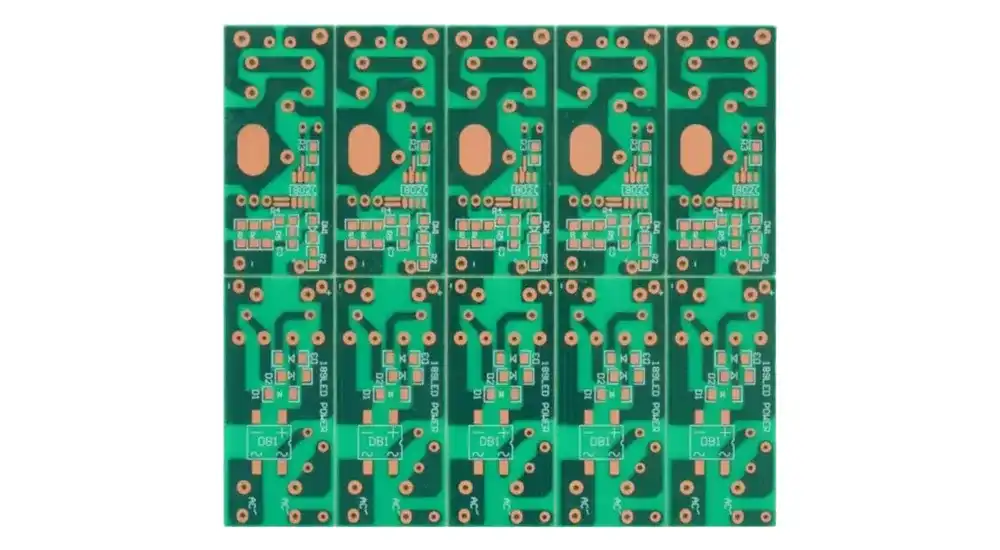
OSP PCB
OSP (Organic Solderability Preservative)
OSP Composition: Thin Organic Layer on Copper
OSP uses water-based organic compounds that chemically bond with copper surfaces to form a thin protective layer, typically 0.2–0.5 micrometers thick. The organometallic complex prevents copper oxidation while remaining removable during soldering through flux activation.
OSP Application Process: Surface Preparation and Chemical Treatment
The OSP process includes surface cleaning, chemical treatment with organic preservatives such as benzotriazole derivatives, and a final water rinse. This produces a highly planar surface that preserves the copper’s original topology and electrical characteristics, making it ideal for high-frequency applications requiring precise controlled impedance.
Advantages of OSP for High-Speed PCB Applications
OSP offers excellent planarity, cost-effectiveness, and environmental compliance. The transparent coating allows visual inspection of underlying copper features while maintaining natural electrical properties. Minimal chemical processing reduces waste compared to metallic finishes, making OSP an attractive choice for high-speed PCB designs.
Limitations and Considerations for OSP
OSP has restricted thermal cycling capability, typically supporting only 2–3 reflow passes before degradation. The organic coating provides limited protection against handling damage and has a relatively short shelf life of 6–12 months depending on storage conditions. Additionally, its transparency can make visual inspection of coating integrity challenging, requiring strict process control to ensure complete coverage.
Comparative Analysis: Performance and Selection Criteria
Signal Integrity and Electrical Performance
Surface finish greatly affects signal transmission in high-speed PCBs. ENIG’s nickel-gold layers provide excellent impedance stability and low insertion loss, making it suitable for demanding RF and microwave circuits. Immersion silver offers superior conductivity, minimizing conductor losses and preserving impedance accuracy, while also providing extra shielding benefits for crosstalk and EMI-sensitive designs. OSP closely mimics bare copper, maintaining the substrate’s original impedance and causing minimal signal loss, ideal for applications requiring precise high-frequency performance.
Manufacturing and Assembly Considerations
ENIG is highly robust, supporting multiple reflow cycles, complex assembly, and reliable via connections in high-density designs. Immersion silver requires careful storage and handling to prevent tarnish, and assembly must consider silver migration in high-temperature processes. OSP is consumed during soldering and can degrade after multiple reflows, so controlled assembly sequences and proper flux selection are essential to maintain solderability and copper protection.
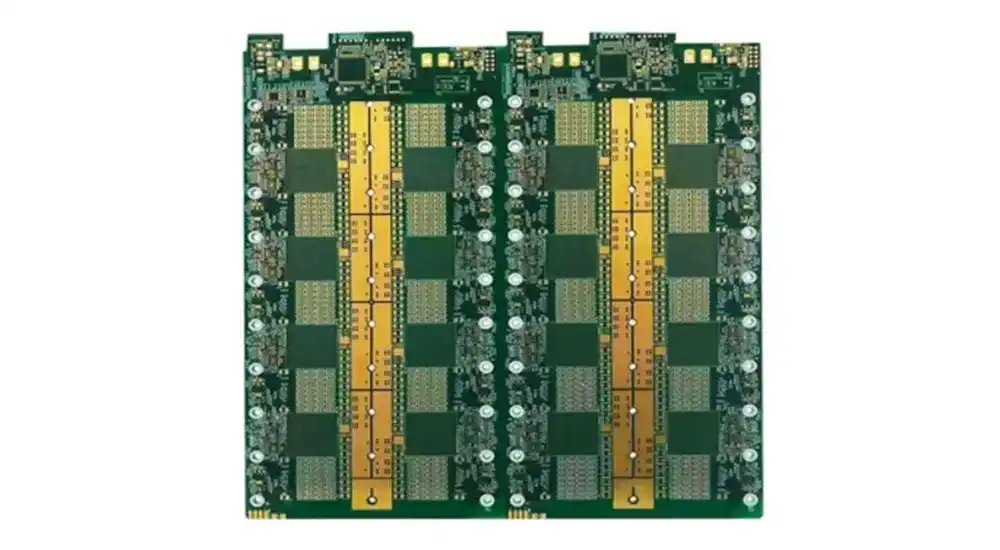
High Speed PCB
Design Guidelines for High-Speed PCB Surface Finish Selection
Application-Specific Recommendations
For high-speed digital designs with multiple BGA components and complex stackups, ENIG offers the best balance of reliability, shelf life, and manufacturing tolerance, ensuring stable signal integrity across broadband frequencies.
Immersion silver is ideal for applications demanding minimal signal loss, such as high-frequency analog or millimeter-wave circuits. Proper storage and handling are crucial to maintain surface finish integrity throughout manufacturing.
OSP is suitable for cost-sensitive applications with controlled assembly processes, where maintaining impedance accuracy and minimal dielectric loading is important. It works well in single-pass assembly operations and shorter product lifecycles.
Material and Process Integration
Surface finish must be compatible with the chosen PCB materials and substrate properties. Low-loss laminates like Rogers or PTFE pair well with ENIG for microwave applications, while standard FR-4 substrates can accommodate any of the three finishes depending on frequency requirements.
The finish also influences stackup design, particularly for impedance control and layer registration. ENIG’s uniform thickness supports tight tolerance designs, whereas OSP preserves the substrate’s original characteristics, helping maintain target impedance with minimal deviation.
Storage and Handling Requirements
ENIG-finished boards offer the longest shelf life, exceeding 12 months under normal conditions, and resist environmental contamination without special packaging.
Immersion silver requires controlled atmospheric storage with moisture barriers and sulfur-free packaging. Nitrogen environments and careful handling extend usable life and preserve solderability.
OSP-finished boards demand dry storage and minimal handling. Vacuum packaging and controlled temperature storage help maintain protective properties and maximize shelf life.
| Surface Finish | Best Applications | Material & Process Compatibility | Shelf Life & Handling |
|---|---|---|---|
| ENIG | High-speed digital, multiple BGAs, complex stackups | Low-loss laminates (Rogers, PTFE), tight tolerance designs | Long shelf life (>12 months), robust, low-maintenance |
| Immersion Silver | High-frequency analog, mmWave, minimal signal loss | Standard FR-4, careful handling, flux control needed | Controlled storage, moisture/sulfur-free, nitrogen preferred |
| OSP | Cost-sensitive, controlled assembly, precise impedance | Standard FR-4, preserves substrate, single-pass assembly | Dry storage, minimal handling, vacuum packaging recommended |
Conclusion
Selecting the right high-speed PCB surface finish requires balancing application needs, manufacturing constraints, and performance goals. Each finish offers distinct advantages:
- ENIG: Versatile for complex high-speed designs, supports multiple assembly cycles, and offers long shelf life.
- Immersion Silver: Provides superior electrical performance and minimal signal loss for applications where signal integrity is critical, with proper handling.
- OSP: Cost-effective option for controlled manufacturing environments, preserving impedance accuracy and minimizing dielectric loading.
At Haoyue Electronics, our engineering team offers comprehensive support for high-speed PCB surface finish selection, including:
- Expert guidance on ENIG, Immersion Silver, and OSP finishes for high-speed applications
- Integration of surface finish selection with PCB material, stackup design, and assembly processes
- Customized recommendations for signal integrity, impedance control, and reliability
- Support for both prototyping and volume production with advanced quality control
Ensure your high-speed PCB designs achieve optimal performance and reliability. Contact our technical specialists today to discuss your requirements and leverage Haoyue Electronics’ expertise in advanced surface finishing technologies.

